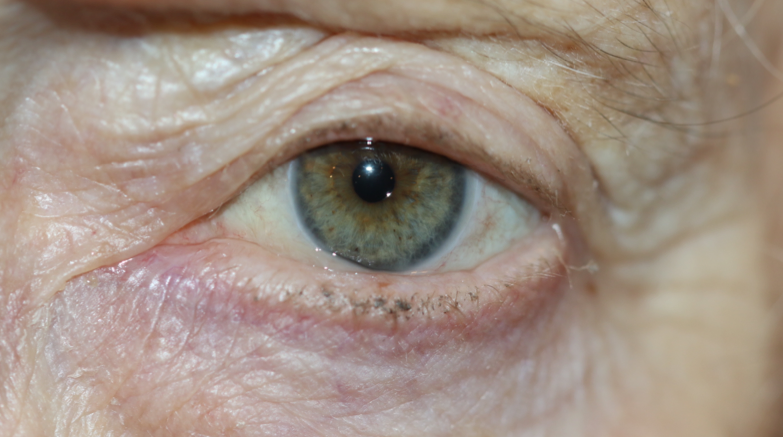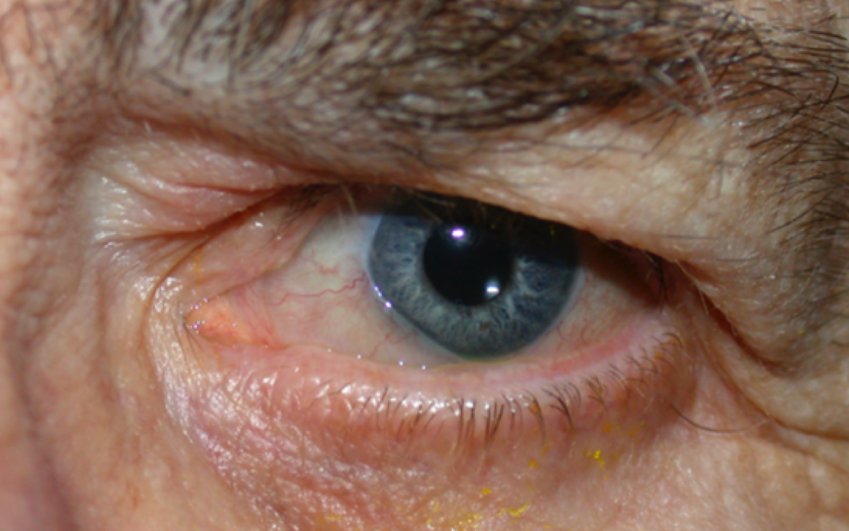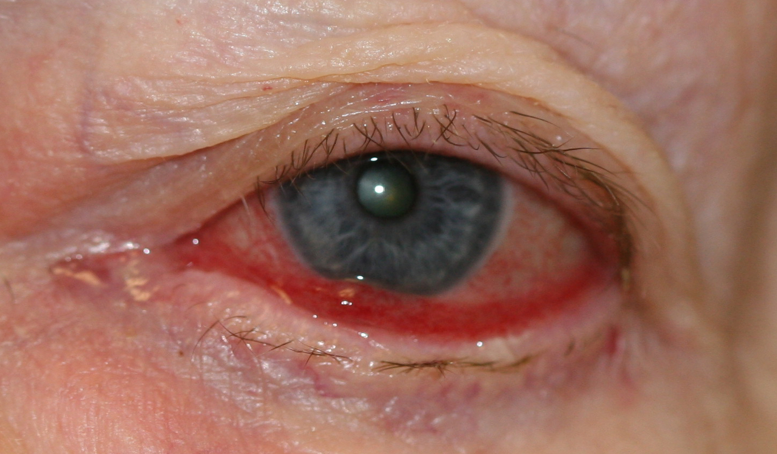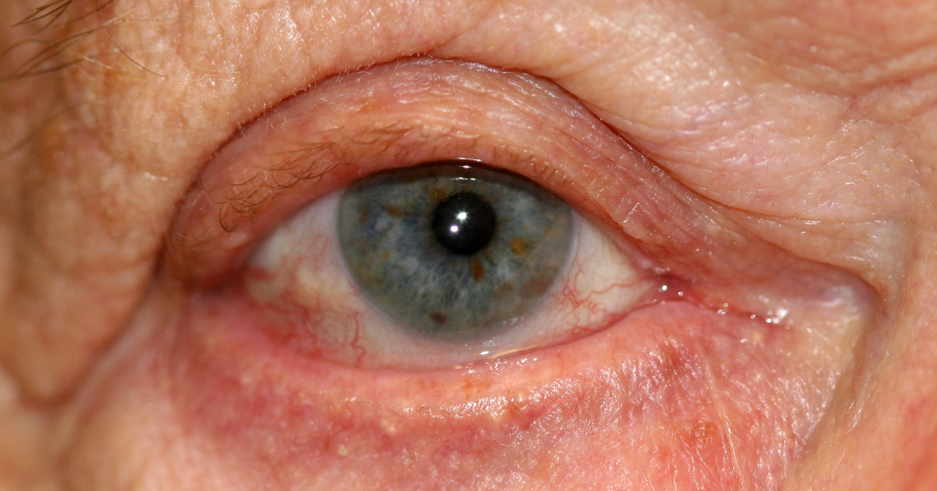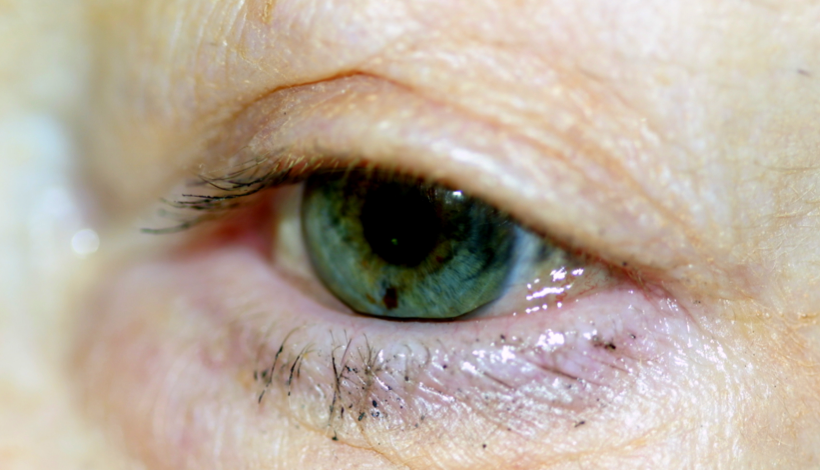[1]
Meller D,Tseng SC, Conjunctivochalasis: literature review and possible pathophysiology. Survey of ophthalmology. 1998 Nov-Dec;
[PubMed PMID: 9862310]
Level 3 (low-level) evidence
[2]
Gan JY,Li QS,Zhang ZY,Zhang W,Zhang XR, The role of elastic fibers in pathogenesis of conjunctivochalasis. International journal of ophthalmology. 2017;
[PubMed PMID: 28944209]
[3]
Watanabe A,Yokoi N,Kinoshita S,Hino Y,Tsuchihashi Y, Clinicopathologic study of conjunctivochalasis. Cornea. 2004 Apr;
[PubMed PMID: 15084864]
[4]
Huang Y,Sheha H,Tseng SC, Conjunctivochalasis interferes with tear flow from fornix to tear meniscus. Ophthalmology. 2013 Aug;
[PubMed PMID: 23583167]
[5]
Cheng AM,Yin HY,Chen R,Tighe S,Sheha H,Zhao D,Casas V,Tseng SC, Restoration of Fornix Tear Reservoir in Conjunctivochalasis With Fornix Reconstruction. Cornea. 2016 Jun;
[PubMed PMID: 26890668]
[6]
Xiang M,Zhang W,Wen H,Mo L,Zhao Y,Zhan Y, Comparative transcriptome analysis of human conjunctiva between normal and conjunctivochalasis persons by RNA sequencing. Experimental eye research. 2019 Jul;
[PubMed PMID: 30999002]
Level 2 (mid-level) evidence
[7]
Francis IC,Chan DG,Kim P,Wilcsek G,Filipic M,Yong J,Coroneo MT, Case-controlled clinical and histopathological study of conjunctivochalasis. The British journal of ophthalmology. 2005 Mar;
[PubMed PMID: 15722309]
Level 2 (mid-level) evidence
[8]
Mimura T,Yamagami S,Usui T,Funatsu H,Mimura Y,Noma H,Honda N,Amano S, Changes of conjunctivochalasis with age in a hospital-based study. American journal of ophthalmology. 2009 Jan;
[PubMed PMID: 18775527]
[9]
Mimura T,Usui T,Yamamoto H,Yamagami S,Funatsu H,Noma H,Honda N,Fukuoka S,Amano S, Conjunctivochalasis and contact lenses. American journal of ophthalmology. 2009 Jul;
[PubMed PMID: 19403112]
[10]
Wang Y,Dogru M,Matsumoto Y,Ward SK,Ayako I,Hu Y,Okada N,Ogawa Y,Shimazaki J,Tsubota K, The impact of nasal conjunctivochalasis on tear functions and ocular surface findings. American journal of ophthalmology. 2007 Dec;
[PubMed PMID: 17916317]
[11]
Li DQ,Meller D,Liu Y,Tseng SC, Overexpression of MMP-1 and MMP-3 by cultured conjunctivochalasis fibroblasts. Investigative ophthalmology
[PubMed PMID: 10670469]
[12]
Zhang X,Li Q,Zou H,Peng J,Shi C,Zhou H,Zhang G,Xiang M,Li Y, Assessing the severity of conjunctivochalasis in a senile population: a community-based epidemiology study in Shanghai, China. BMC public health. 2011 Mar 31;
[PubMed PMID: 21453468]
[13]
Chhadva P,Alexander A,McClellan AL,McManus KT,Seiden B,Galor A, The impact of conjunctivochalasis on dry eye symptoms and signs. Investigative ophthalmology
[PubMed PMID: 26024073]
[14]
Meller D,Li DQ,Tseng SC, Regulation of collagenase, stromelysin, and gelatinase B in human conjunctival and conjunctivochalasis fibroblasts by interleukin-1beta and tumor necrosis factor-alpha. Investigative ophthalmology
[PubMed PMID: 10967046]
[15]
Ward SK,Wakamatsu TH,Dogru M,Ibrahim OM,Kaido M,Ogawa Y,Matsumoto Y,Igarashi A,Ishida R,Shimazaki J,Schnider C,Negishi K,Katakami C,Tsubota K, The role of oxidative stress and inflammation in conjunctivochalasis. Investigative ophthalmology & visual science. 2010 Apr
[PubMed PMID: 20019361]
[16]
Hashemian H,Mahbod M,Amoli FA,Kiarudi MY,Jabbarvand M,Kheirkhah A, Histopathology of Conjunctivochalasis Compared to Normal Conjunctiva. Journal of ophthalmic & vision research. 2016 Oct-Dec
[PubMed PMID: 27994801]
[17]
Yokoi N,Komuro A,Nishii M,Inagaki K,Tanioka H,Kawasaki S,Kinoshita S, Clinical impact of conjunctivochalasis on the ocular surface. Cornea. 2005 Nov
[PubMed PMID: 16227820]
[18]
Zhang XR,Cai RX,Wang BH,Li QS,Liu YX,Xu Y, [The analysis of histopathology of conjunctivochalasis]. [Zhonghua yan ke za zhi] Chinese journal of ophthalmology. 2004 Jan;
[PubMed PMID: 14989959]
[19]
Balci O, Clinical characteristics of patients with conjunctivochalasis. Clinical ophthalmology (Auckland, N.Z.). 2014;
[PubMed PMID: 25210435]
[20]
Di Pascuale MA,Espana EM,Kawakita T,Tseng SC, Clinical characteristics of conjunctivochalasis with or without aqueous tear deficiency. The British journal of ophthalmology. 2004 Mar;
[PubMed PMID: 14977775]
[21]
Gumus K,Crockett CH,Pflugfelder SC, Anterior segment optical coherence tomography: a diagnostic instrument for conjunctivochalasis. American journal of ophthalmology. 2010 Dec;
[PubMed PMID: 20869039]
[22]
Höh H,Schirra F,Kienecker C,Ruprecht KW, [Lid-parallel conjunctival folds are a sure diagnostic sign of dry eye]. Der Ophthalmologe : Zeitschrift der Deutschen Ophthalmologischen Gesellschaft. 1995 Dec;
[PubMed PMID: 8563428]
[23]
Zhang XR,Zou HD,Li QS,Zhou HM,Liu B,Han ZM,Xiang MH,Zhang ZY,Wang HM, Comparison study of two diagnostic and grading systems for conjunctivochalasis. Chinese medical journal. 2013 Aug;
[PubMed PMID: 23981623]
[24]
Eifrig DE, Grading conjunctivochalasis. Survey of ophthalmology. 1999 Jul-Aug;
[PubMed PMID: 10466593]
Level 3 (low-level) evidence
[25]
Chan TC, Ye C, Ng PK, Li EY, Yuen HK, Jhanji V. Change in Tear Film Lipid Layer Thickness, Corneal Thickness, Volume and Topography after Superficial Cauterization for Conjunctivochalasis. Scientific reports. 2015 Jul 17:5():12239. doi: 10.1038/srep12239. Epub 2015 Jul 17
[PubMed PMID: 26184418]
[26]
Acera A,Suárez T,Rodríguez-Agirretxe I,Vecino E,Durán JA, Changes in tear protein profile in patients with conjunctivochalasis. Cornea. 2011 Jan;
[PubMed PMID: 20861728]
[27]
Mimura T,Mori M,Obata H,Usui T,Yamagami S,Funatsu H,Noma H,Amano S, Conjunctivochalasis: associations with pinguecula in a hospital-based study. Acta ophthalmologica. 2012 Dec
[PubMed PMID: 21518307]
[28]
Hashemi H,Rastad H,Emamian MH,Fotouhi A, Conjunctivochalasis and Related Factors in an Adult Population of Iran. Eye
[PubMed PMID: 28346280]
[29]
Kiss HJ,Németh J, Isotonic Glycerol and Sodium Hyaluronate Containing Artificial Tear Decreases Conjunctivochalasis after One and Three Months: A Self-Controlled, Unmasked Study. PloS one. 2015
[PubMed PMID: 26172053]
[30]
Prabhasawat P,Tseng SC, Frequent association of delayed tear clearance in ocular irritation. The British journal of ophthalmology. 1998 Jun;
[PubMed PMID: 9797670]
[31]
Otaka I,Kyu N, A new surgical technique for management of conjunctivochalasis. American journal of ophthalmology. 2000 Mar;
[PubMed PMID: 10704560]
[32]
Ji YW,Seong H,Lee S,Alotaibi MH,Kim TI,Lee HK,Seo KY, The correction of conjunctivochalasis using high-frequency radiowave electrosurgery improves dry eye disease. Scientific reports. 2021 Jan 28;
[PubMed PMID: 33510304]
[33]
Marmalidou A,Palioura S,Dana R,Kheirkhah A, Medical and surgical management of conjunctivochalasis. The ocular surface. 2019 Jul;
[PubMed PMID: 31009751]
[34]
Meller D,Maskin SL,Pires RT,Tseng SC, Amniotic membrane transplantation for symptomatic conjunctivochalasis refractory to medical treatments. Cornea. 2000 Nov;
[PubMed PMID: 11095053]
[35]
Kheirkhah A,Casas V,Blanco G,Li W,Hayashida Y,Chen YT,Tseng SC, Amniotic membrane transplantation with fibrin glue for conjunctivochalasis. American journal of ophthalmology. 2007 Aug;
[PubMed PMID: 17659969]
[36]
Komuro A,Yokoi N,Kato H,Sonomura Y,Sotozono C,Kinoshita S, The Relationship between Subjective Symptoms and Quality of Life in Conjunctivochalasis Patients. Diagnostics (Basel, Switzerland). 2021 Jan 27;
[PubMed PMID: 33513725]
Level 2 (mid-level) evidence

